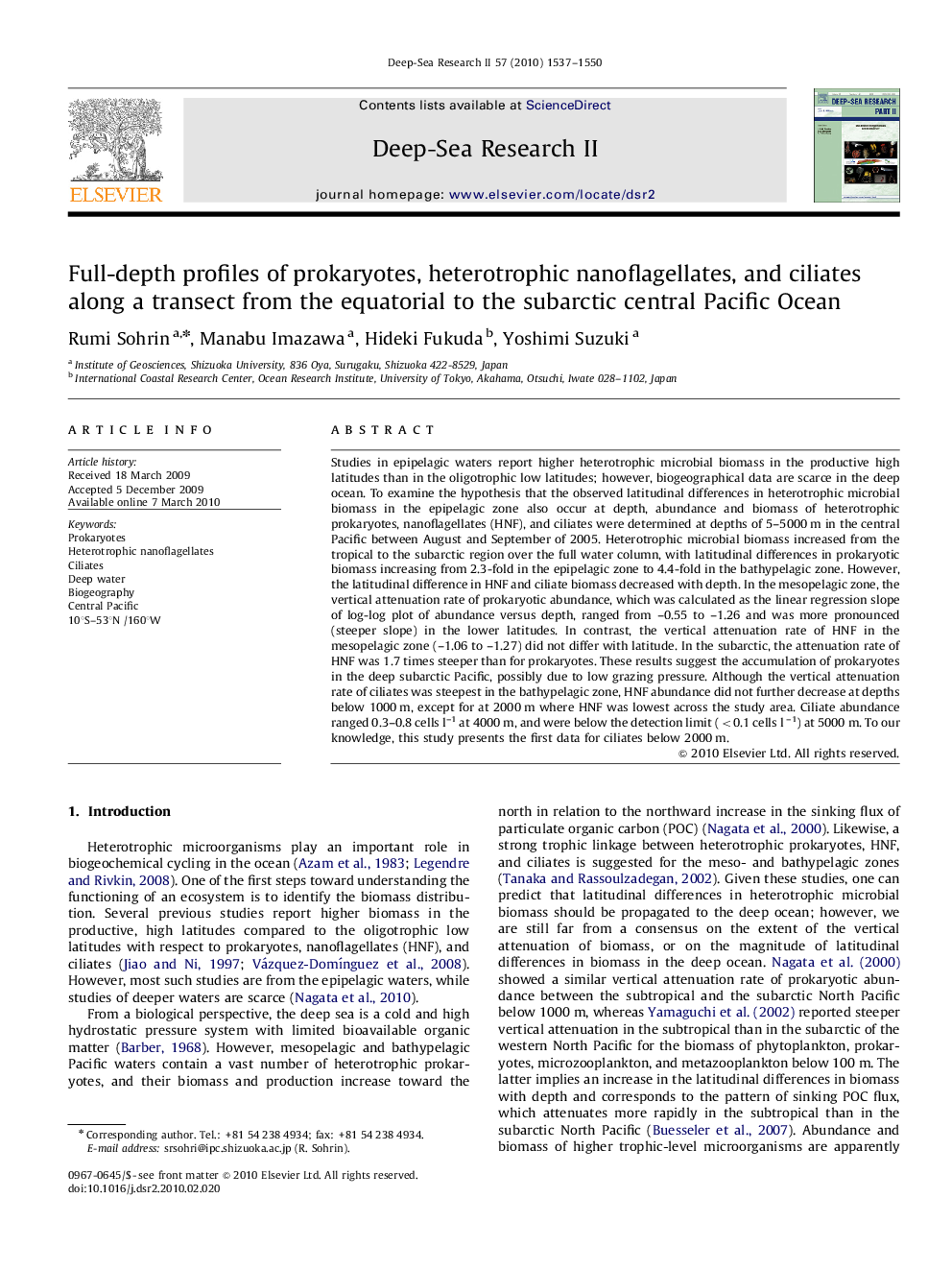| کد مقاله | کد نشریه | سال انتشار | مقاله انگلیسی | نسخه تمام متن |
|---|---|---|---|---|
| 4537029 | 1326347 | 2010 | 14 صفحه PDF | دانلود رایگان |

Studies in epipelagic waters report higher heterotrophic microbial biomass in the productive high latitudes than in the oligotrophic low latitudes; however, biogeographical data are scarce in the deep ocean. To examine the hypothesis that the observed latitudinal differences in heterotrophic microbial biomass in the epipelagic zone also occur at depth, abundance and biomass of heterotrophic prokaryotes, nanoflagellates (HNF), and ciliates were determined at depths of 5–5000 m in the central Pacific between August and September of 2005. Heterotrophic microbial biomass increased from the tropical to the subarctic region over the full water column, with latitudinal differences in prokaryotic biomass increasing from 2.3-fold in the epipelagic zone to 4.4-fold in the bathypelagic zone. However, the latitudinal difference in HNF and ciliate biomass decreased with depth. In the mesopelagic zone, the vertical attenuation rate of prokaryotic abundance, which was calculated as the linear regression slope of log-log plot of abundance versus depth, ranged from –0.55 to –1.26 and was more pronounced (steeper slope) in the lower latitudes. In contrast, the vertical attenuation rate of HNF in the mesopelagic zone (–1.06 to –1.27) did not differ with latitude. In the subarctic, the attenuation rate of HNF was 1.7 times steeper than for prokaryotes. These results suggest the accumulation of prokaryotes in the deep subarctic Pacific, possibly due to low grazing pressure. Although the vertical attenuation rate of ciliates was steepest in the bathypelagic zone, HNF abundance did not further decrease at depths below 1000 m, except for at 2000 m where HNF was lowest across the study area. Ciliate abundance ranged 0.3–0.8 cells l–1 at 4000 m, and were below the detection limit (<0.1 cells l –1) at 5000 m. To our knowledge, this study presents the first data for ciliates below 2000 m.
Journal: Deep Sea Research Part II: Topical Studies in Oceanography - Volume 57, Issue 16, 15 August 2010, Pages 1537–1550